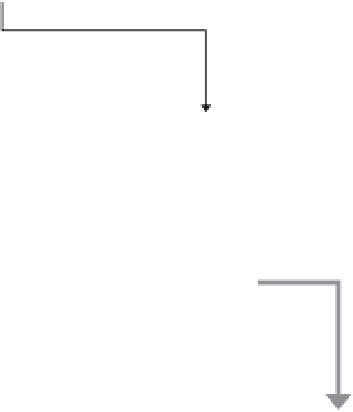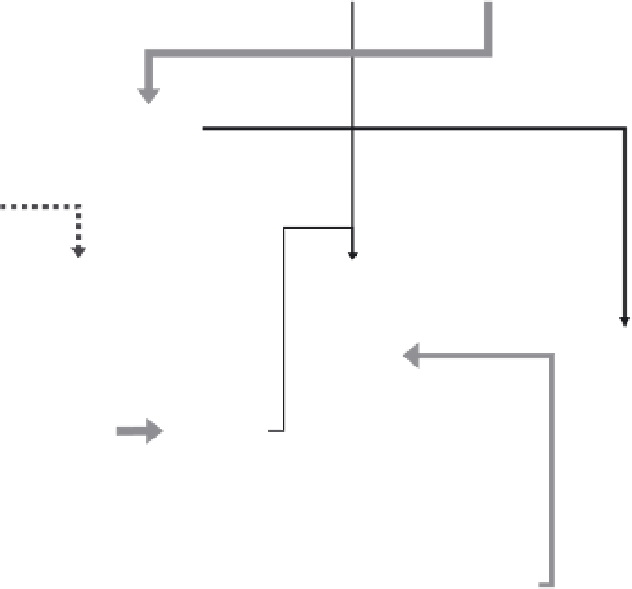Agriculture Reference
In-Depth Information
in 2001. HACCP, which is an acronym for hazard analy-
sis/critical control points, is a food safety system intended
to minimize the risk of food-borne illness due to a particular
product. HACCP is implemented by a food safety team that
evaluates the potential hazards of a product and its process
and their severity and then identifies the critical steps in the
process that provide a control for those hazards. In orange
juice processing and packaging, there are two critical con-
trol points (CCPs) that must be addressed, although some
processors/packagers identify and control additional CCPs.
A necessary CCP for most orange juice processors is
the control of potentially hazardous metal fragments and
inclusions in the juice. The potential for metal breakage
and fragmentation during the processing steps of extrac-
tion and finishing is relatively high due to the nature and
operation of the equipment. Most processors use a series of
screens, one of which is designated as a CCP, to prevent the
inclusion of metal pieces. Metal fragments in the finished
(packaged) product may also be controlled through the use
of metal detectors. Another CCP in the orange juice process
is a pasteurization treatment sufficient to reduce pertinent
pathogens (in this case,
Salmonella
spp.) by a factor of 5
logarithmic units or 5-log reduction (99.999%). Most pro-
cessors/packages accomplish this step through thermal pro-
cesses, namely, shell-and-tube heat exchangers that quickly
pasteurize, then chill, the juice. For both CCPs, monitoring
records as well as corrective action records must be kept.
The juice HACCP regulation is further discussed on the
FDA's Juice Safety website (FDA, 1997).
ORANGE BY-PRODUCTS
Several by-products are obtained from orange processing.
A mass balance of the major by-products is shown in
Fig. 21.7. A major discussion of citrus by-products has
been published (Braddock, 1999a).
Storage in
bins
Oil
emulsion
Receiving
Unloading
Grading
Washing
Grading
Sizing
Fruit
SSC/TA
analysis
560 kg
Pulpy juice
Oil emulsion
Extraction
Peel and rag
440 kg
60 kg
Pulp
Defect
removal
Finishing
(c)
(d)
(e)
500 kg
Juice
Hard finishing
Finishing
Size
Molasses (50ºBrix)
(a)
(b)
51.5 kg
Centrifugation
stage 1
Centrifugation
Pasteurization
Pasteurization
Hydrolysis
Pasteurization
Water
Press liquor
Deaeration/
deo iling
Centrifugation
(polishing)
Pulp Wash
Evaporation
Pressing
92 kg
286 kg
Wax
Pasteurization
Pasteurization
Cooling
Drying
Winterizatio
Finishing
Frozen
storage
Aseptic
storage
Frozen
storage
Frozen
storage
Condensation
Evaporation
Pelletizing
Evaporation
not from
concentrate
(12ºBrix)
frozen
concentrate
Aqueous
aroma
Pulp
(500-900 g/l)
Pulp wash
Dry cattle
feed
d-limonene
(100%)
Essential oil
(100%)
(65ºBrix)
(65ºBrix)
500 kg
92.3 kg
0.6 kg
49 kg
9 kg
98 kg
1.1 kg
5 kg
Figure 21.7.
Schematic of orange juice and orange by-product processing. Mass balance values are
approximate as they vary depending on processing conditions.






































Search WWH ::

Custom Search